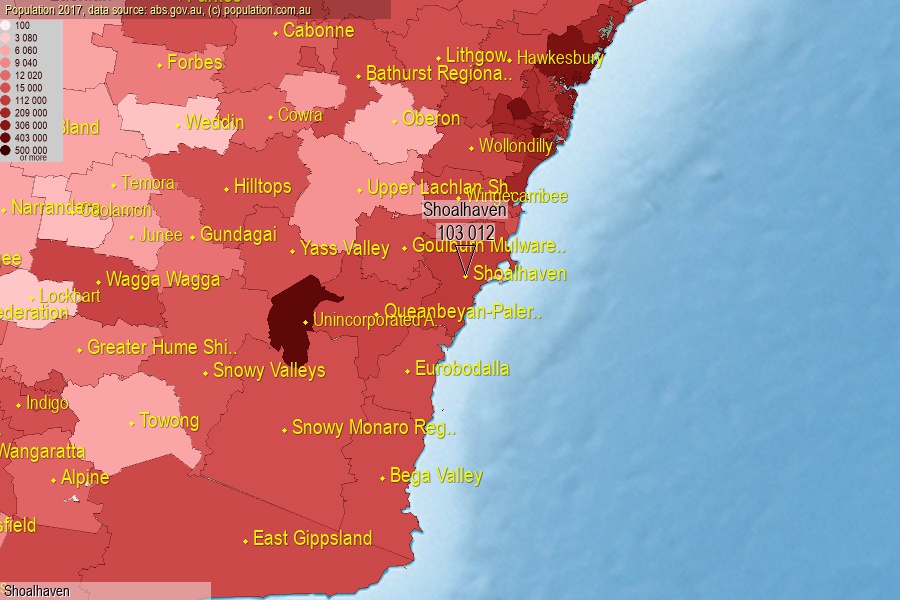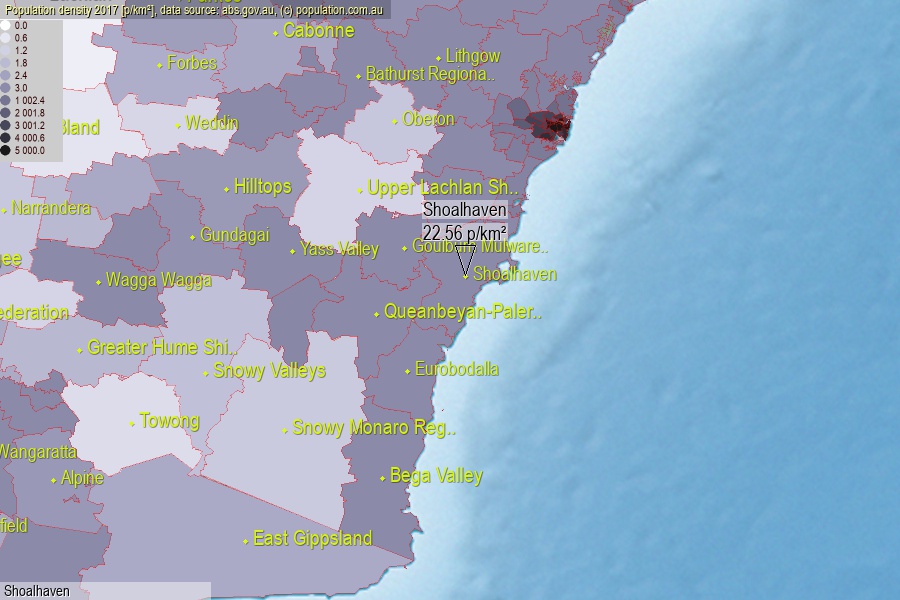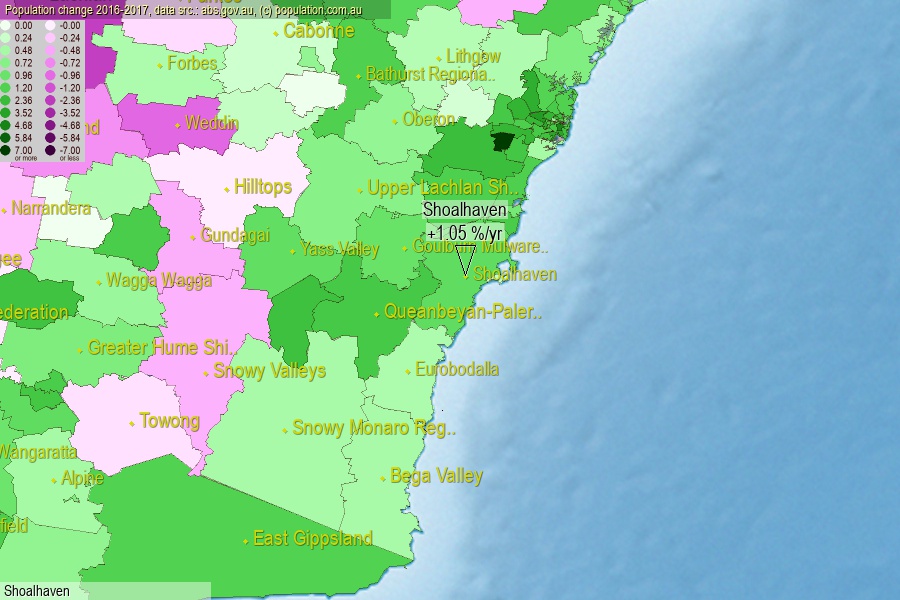 population.com.au
population.com.auLast official estimated population of Shoalhaven City (as Local Government Area) was 103 012 people (on 2017-06-30)[2]. This was 0.42% of total Australian population and 1.295% of NSW population. Area of Shoalhaven is 4 566.70 km², in this year population density was 22.56 p/km² . If population growth rate would be same as in period 2016-2017 (+1.05%/yr), Shoalhaven population in 2025 would be 111 986. [0]



Click to enlarge. Shoalhaven is located in the center of the images.
Population [people], population density [p./km²] and population change [%/year] [2]
[1996-2001] +1.90 %/Y
[2001-2002] +1.38 %/Y
[2002-2003] +0.92 %/Y
[2003-2004] +0.58 %/Y
[2004-2005] +0.89 %/Y
[2005-2006] +0.37 %/Y
[2006-2007] +1.10 %/Y
[2007-2008] +0.93 %/Y
[2008-2009] +1.52 %/Y
[2009-2010] +1.49 %/Y
[2010-2011] +1.10 %/Y
[2011-2012] +1.00 %/Y
[2012-2013] +0.96 %/Y
[2013-2014] +1.22 %/Y
[2014-2015] +1.27 %/Y
[2015-2016] +1.38 %/Y
[2016-2017] +1.05 %/Y
[0] Calculated with linear interpolation from officially estimated population
[1] Read more about LGA and Australian Statistical Geography Standard (ASGS) on abs.gov.au
[2] Population data from Australian Bureau of Statistics (Population and density: 2017; change: 2016-2017)
[3] Digital Boundaries: Australian Statistical Geography Standard (ASGS) 2016.